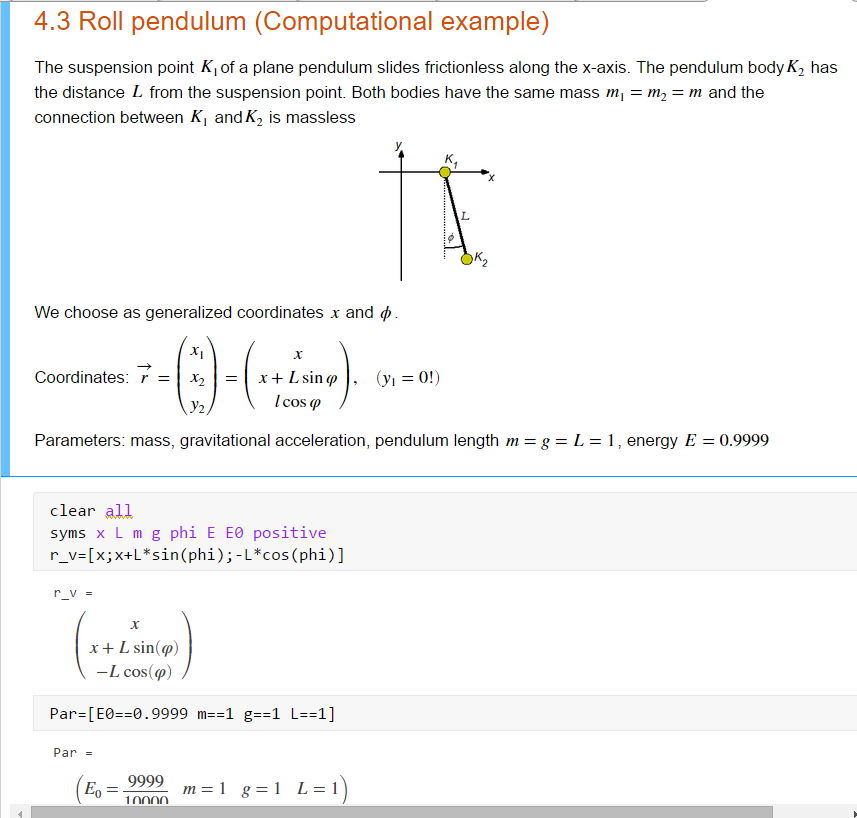
- #Substitute values in matlab symbolic toolbox code#
- #Substitute values in matlab symbolic toolbox series#
A1P1 Plotting Graphs ode45 is the best function to apply as a "first try" for most problems. Throughout all of the examples that we did there is almost no difference between RK4 and ode45. It is used to explain the position- and velocity change of particles (electrons and protons, N = 1000) moving in plasma. Most impressive, the RK4 is fourth-order so we get a ten-thousand-fold improvement for a ten-fold reduction in ¢t.
I've used ode45 in here for regulation and tracking problems. Compare your results with the Euler method solutions you have obtained earlier. For the rest of the results we will use the RK4 method to simulate the pendulum. First Order Equations (y0= f(t y) y(t 0)=y 0 matlab_ODE45_MDOF. この方程式を 1 次系として書き直すと次のよう Absolute change refers to the simple difference in the indicator over two periods in time, i. Use your RK4 function to estimate u(3) by a) u 120, take N=120. Solve the SIR model by using ode45 method in deSolve and extract \(t_\). To do this we first had to use the dsolve code. Then I want to plot their x vs y trajectory. I am trying to either solve this using the Runge-Kutta 4th order method or the built-in ODE45 in Matlab. For differential equations with smooth solutions, ode45 is often more accurate than ode23. 
This was expected but I wanted to confirm this seeing it in action.
In general, are there cases where it is better to use a finite difference (interpolation) method than using an ODE solver such as ode45? Fightfish said: Technically you can still use RK4 (or related schemes) for the temporal evolution (while discretising the spatial Laplacian part of the Schrodinger equation via finite differences). The fourth-order Runge-Kutta method requires four evaluations of the right That is, use the declared local variable/parameter of the anonymous function in the computation of its value. Because the method is explicit ( doesn't appear as an argument to ), equation (6. Read Book Projectile Motion Using Runge Kutta Methods in the runge kutta loop, to get the projectile's motion. S is an array for the homogeneous kinetic expressions. There is little point to using one of the Runge Kutta Fehlberg methods without making the step size adaptive. For these tests we will solve a diagonal 100 independent linear differential equations. If you're not familiar with using numerical methods to simulate orbits, I'd recommend taking a look there first! Part 1: Python N Body Simulation. 
However I really need to get a time series of values of the mass vs. It is often the first integrator that someone working in the area will turn to because it is relatively simple (for Runge-Kutta), good performance, and very robust. The problem with Euler's Method is that you have to use a small interval size to get a reasonably accurate result. In the last section, Euler's Method gave us one possible approach for solving differential equations numerically. Relative change expresses the absolute change as a percentage of the value of the indicator in the earlier period, i. Both solu-tions change in time identically (by eye) for about 80 seconds. Note: The MATLAB function ode45 is written by experts in ODEs and MATLAB, hence it could be trusted. Intro First Order Second Fourth Printable Contents Introduction. The ode45 function is a versatile high quality function and it is recommended as the first solver to be tried in most problems.
RK4, a C++ library which applies the fourth order Runge-Kutta algorithm to estimate the solution of an ordinary differential equation at the next time step. 
Instead, a novel procedure is proposed where the system variables are split into Euler vs Runge-Kutta for projectile motion /8.
Ode45 vs rk4 Using this code we were able to compare Euler, RK4, as well as the MATLAB solution to D.







 0 kommentar(er)
0 kommentar(er)
